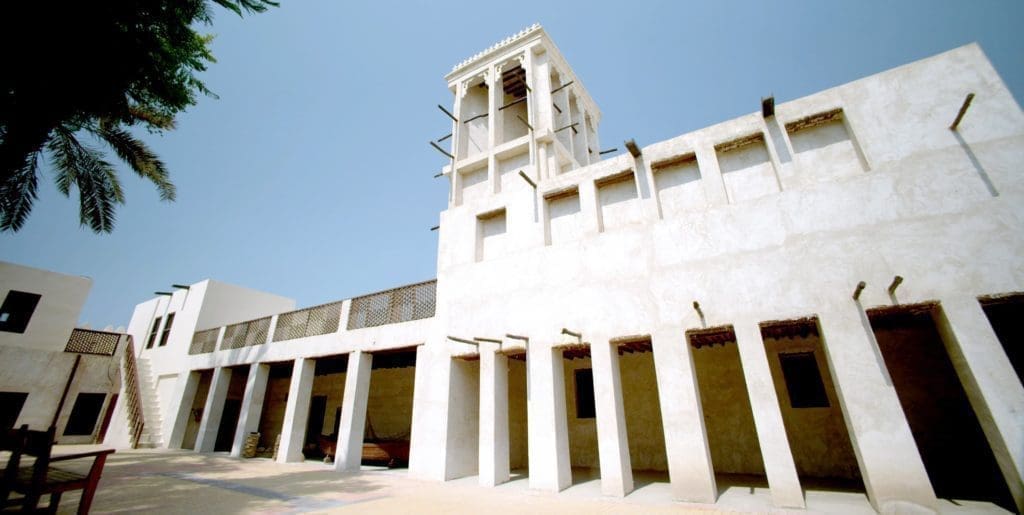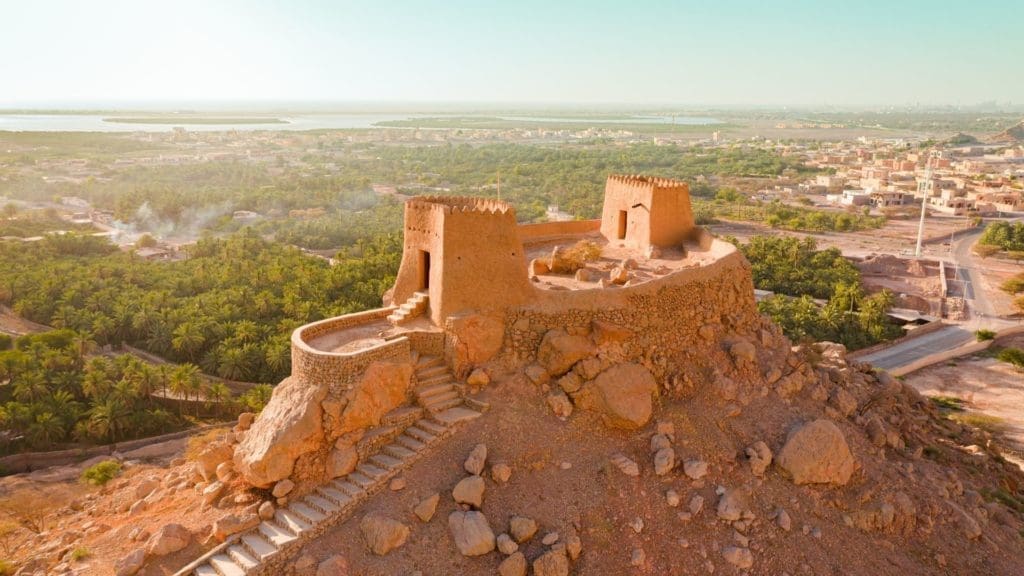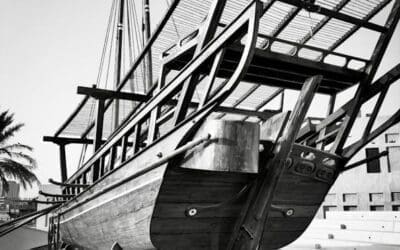Traditional Dhow Building in Ras Al Khaimah
Explore the enduring legacy of dhow building in Ras Al Khaimah, tracing its vital role in the region's ancient pearling…







Home » Blog » Blogs » Arts & Culture » Ras Al Khaimah Art Zone: Where to See Local Artwork, Craft and Architecture
Discover Ras Al Khaimah’s authentic cultural scene, blending rich history, traditional crafts, and timeless architecture. Explore historical artworks at the National Museum and annual Art Festival, witness ancient pearl diving and pottery techniques, and visit iconic heritage sites like Dhayah Fort and Al Jazeera Al Hamra village.

While Dubai dazzles with its glamorous urban landscape, Ras Al Khaimah offers a quieter, more authentic side of the cultural scene in the United Arab Emirates (UAE).
Known for its rich history, traditional crafts, and timeless architecture, this emirate has emerged as a place where heritage and creativity come together. These are not just cultural pillars but living, breathing elements that tell the story of the people.
In this guide, we’ll take you through the most captivating attractions in the Ras Al Khaimah art zone, allowing you to experience its artistic soul firsthand.
The Ras Al Khaimah art scene is a vivid tapestry of history, culture, and storytelling, offering a window into the past and present. Explore these destinations where the brushstrokes of tradition and heritage come to life:

As with many of the houses in the older side of the emirate, the Ras Al Khaimah National Museum is built using coral blocks and stones. This distinctive material adds aesthetic charm and provides effective insulation, keeping the interior cool during the hot summer months and warm in winter.
Once the primary residence of the ruling Quwasim family, the museum now houses a collection of ancient weapons, silverware, antiquities, and other historical items. Many of these were donated by its original occupants and residents from all over Ras Al Khaimah. They are displayed in galleries around the museum’s inner courtyard.
Best Time to Visit: Weekday mornings to avoid crowds and the midday heat
Open Hours:
Originally known as the “Ras Al Khaimah Fine Arts Festival,” the event was rebranded in 2024 as “Ras Al Khaimah Art” to represent the event’s broader focus on global artistic exchange while maintaining a celebration of local creativity.
This annual art festival in Ras Al Khaimah, held every February, celebrates a variety of art forms like installations, sculptures, lively performances, and engaging interactive exhibits. It brings together talented artists from different countries and blends Emirati traditions with diverse international influences beautifully.
Each year, Ras Al Khaimah Art participants showcase their art around a specific theme through different media, reflecting art spanning across both generations and cultures.
Best Time to Visit: The festival is at its peak in February, making it the ideal time to visit. It also aligns with the cooler months, ensuring a more comfortable experience.
Ras Al Khaimah is a living workshop, where ancient skills and crafts have been preserved and passed down through generations. From the fine art of pearl diving to Emirati-style pottery and weaving, these places offer a hands-on experience of the UAE’s rich artisanal heritage:

Suwaidi Pearl Farm offers visitors a unique opportunity to experience the centuries-old tradition of pearl diving. Here, you can learn about the ancient process of harvesting pearls and purchase authentic gems harvested from the Arabian Gulf waters.
Best Time to Visit: November to March for a cooler weather (ideal for outdoor activities)
The ancient art of pottery-making in Ras Al Khaimah dates back to the Bronze Age. At Jazirat Al Hamra Pottery Studio, visitors can watch master potters shape clay into beautiful vases, bowls, and decorative items using traditional techniques. This is a great place to witness the skill and precision required to create stunning ceramic pieces.
Best Time to Visit: Winter months (Nov–Mar) for a more comfortable experience in the studio.
For those looking to shop traditional Ras Al Khaimah handicrafts, Al Hamra Mall offers a wide variety of textiles, jewelry, and many more. These locations are great for finding unique handmade items, including woven rugs and embroidered garments.
Best Time to Visit: Anytime
Besides mosques and palaces, the UAE also has several architectural wonders that reflect the country’s ancient civilization. Here are some structures in Ras Al Khaimah that have stood the test of time:

Perched atop a hill, Dhayah Fort offers a commanding view of the surrounding date palm groves and mountainous landscapes. This 18th-century mud-and-stone fort played a key role in defending Ras Al Khaimah against foreign invasions.
Hike to the top for panoramic views of the valley and the surrounding landscape. You can also explore the fort’s interior and learn about its historical significance during various battles. Take in the breathtaking views at sunrise or sunset for the best photo opportunities.
Best Time to Visit: Late afternoon or early morning to avoid the heat and capture the views in the best light.
Al Jazeera Al Hamra is the last remaining pearl-diving village in the UAE, preserved to reflect life in the region before the oil boom. Its coral-stone houses, wind towers, and mosque showcase traditional Emirati architecture and the unique way of life that shaped the region’s culture.
Best Time to Visit: Early morning or late afternoon to enjoy the village’s tranquility and avoid the midday heat. If you can, visit during one of the heritage-art festivals or cultural performances for a deeper connection to the site’s history.
Ras Al Khaimah pulls you into a world where art, history, and culture are not only on display but also living in people’s hearts and minds. Wander through the local markets, pick up lovely souvenirs, or hit the trails around forts that make your mind wander back in time. Embrace Ras Al Khaimah’s artistic soul to enrich your own today.


Explore the enduring legacy of dhow building in Ras Al Khaimah, tracing its vital role in the region's ancient pearling…


Explore the United Arab Emirates flag's historical journey, from its 1971 adoption to the deeper meaning behind its iconic red,…